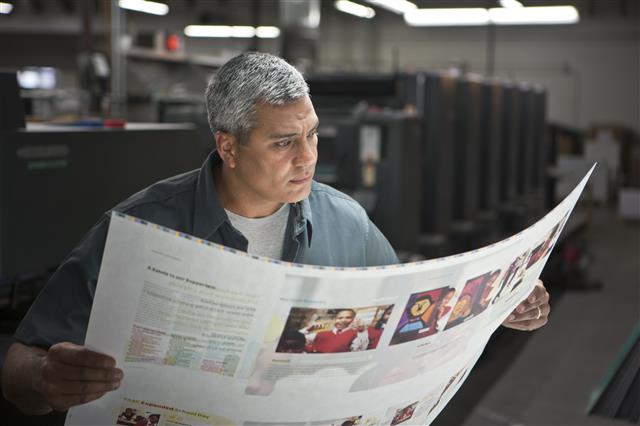Written by Howie Fenton
Senior Technology Consultant, NAPL

I ran into Mary Schilling recently at an industry event and congratulated her on her new blog on the Printing Impressions website that focuses on inkjet printing. Mary has been focusing on the relationship between ink and paper for a decade now. I must say she came out of the gate running with her first blog when she asked the question, “Whose responsibility is it to ensure the paper is compatible with inkjet?”
At first no one responded, which made me wonder–did people think this was a trick question? It surely sounds like a trick question. Maybe it is, because the answer: it depends. It depends on whether you’re willing to live within the recommendations made by the manufacturer or try to save some money and deviate from those recommendations.
Although the circumstances are different, this strikes me as a question we’ve seen in the industry many times before. As some might say, “back in the day” we had the same types of questions in offset printing with the choice of printing plates or paper. If you went back even further, the same was true for film and cameras. The general rule of thumb has always been that you work with the manufacturer’s specified or recommended consumables if you want to hold them accountable.
But these questions and debates typically appear here in early stages of a new technology such as inkjet production printing. And there are different stages of adoption of new technology. These early stages include the pioneers or early adopters who often struggle with these questions until the technology and equipment goes more mainstream. Sometimes the adoption of a new technology becomes disruptive.
This is how Ray Kurzweil, an expert with revolutionary technologies, explained how certain technologies are disruptive and transform industries, business models and pose new opportunities—and hurdles.
The same is true with inkjet production printing. If the customer works with the approved ink and paper recommendations made by inkjet press manufacturer, then you can hold the manufacturer responsible. If the customer is looking for a better deal (read “cheaper”) and works with another ink or paper (read “non- approved”) it’s the other vendors or the customer’s responsibility.
For example, if I look at the Xerox Impika website, you will find recommendations about ink. When I download a presentation from the IMI show, I see that the different inkjet devices print on paper, plastic, and even packaging materials. As a result, I would assume that if you follow the manufacturer recommendations you should avoid the typical problems associated with new substrates.
As an added safeguard, Xerox has a process for inkjet customers to determine compatibility with various substrates prior to the customer’s purchase. If they want to pursue a paper stock not on the “tested media list”, Xerox can test their desired paper stock to determine if it is acceptable and supported. This takes the guesswork and risk out of the process so that the customer can be confident with the expected inkjet product and paper performance.
What do you think? Who is responsible for the quality from Inkjet Production Printing?
—
Howie Fenton is a consultant at NAPL. Howie advises commercial printers and in-plants on benchmarking performance against industry leaders, increasing productivity, and adding digital and value services through customer research. For more information click here
2 Comments
Comments are closed.



Great question, intuitive answer: Both. As a printing house I would like to rely on an application. This consists of machine, supplies, media and most probably maintenance, software, operating assistance and so on. Having one partner that can offer all this and be held responsible if anything goes wrong (in this case maybe even locate problems faster) means having a major headache less. So basically, manufacturer and paper supplier should team up and create a combined face to the customer.
Howie, thanks for the mention. It has really been an age old question when technology changes as fast as inkjet has. With so many inks and paper now as well as how the user adapts the technology to the market, I still say it is all of us. If we all engage ourselves into this market we all win. If we hang back and allow confusion for the customer, the market will lag. TEAM WORK